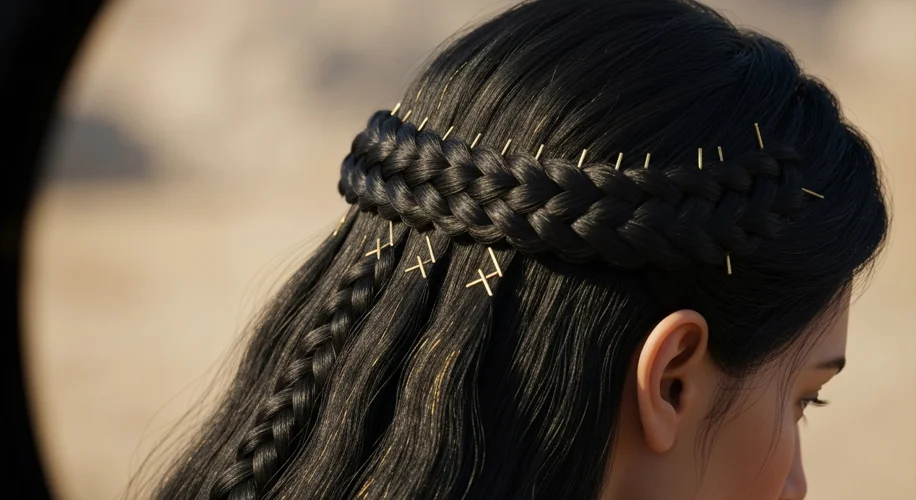In the sun-drenched landscapes of ancient Greece, where philosophy flourished and gods walked among mortals, beauty was not merely skin deep – it was woven into the very fabric of society, and the crowning glory of a person’s appearance was undoubtedly their hair.
Imagine the bustling agora, the vibrant theatre, or the serene academy. Amidst the debates and dramas, a consistent aesthetic prevailed. For Greek men, short, neatly trimmed hair was the ideal, often accompanied by a beard, signifying maturity and wisdom. For women, the narrative was far more complex and varied. Long, flowing locks were highly prized, a symbol of femininity and grace. These tresses were meticulously styled, often elaborately braided or gathered into intricate buns and chignons, held in place with pins, ribbons, or even metal ornaments.

But what of the color? While today we associate golden blonde hair with a certain type of classical beauty, the reality in ancient Greece was more nuanced. The majority of Greeks, like many people of Mediterranean descent, naturally had dark hair – shades of brown and black. This dark hue was generally considered the norm and was often celebrated in art and literature. However, this doesn’t mean that lighter, brighter hair was not admired or sought after. In fact, the opposite was true.
Ancient texts and artistic representations reveal a fascination with lighter hair colors, particularly blonde and red. These shades were often associated with the gods, heroes, and figures of great beauty or exoticism. Homer, in the Odyssey, describes the goddess Calypso as having “auburn hair,” and Helen of Troy, the epitome of beauty, is often depicted with lighter, radiant locks.
So, how did they achieve these coveted lighter shades? While chemical bleaching as we know it today was non-existent, the Greeks were ingenious cosmetologists, adept at using natural ingredients to enhance their appearance. One of the primary methods for lightening hair involved the use of “plant preparations” or “cosmetics made from flowers and roots.”
These preparations often included ingredients like chamomile, which has natural lightening properties, and saffron. Saffron, known for its vibrant yellow hue, was particularly favored. Mixed with oils or fats, these plant-based concoctions were applied to the hair and then exposed to the sun. The heat of the sun, combined with the properties of the plants, would gradually lighten the hair strands. This was a slow, gentle process, often repeated over several weeks or months to achieve the desired effect.
Another common practice involved the use of “alkaline soaps” or “potash lye.” These substances, when mixed with water, created a mild alkali that could strip pigment from the hair. While certainly more potent than plant preparations, these methods were still relatively gentle compared to modern bleaching agents. They would likely have resulted in a more gradual lightening, perhaps a reddish or golden hue.
We also find references to the use of “pumice stone” and “ashes.” These abrasive materials could be used to gently scrub the hair, removing some of the outer layers of the cuticle and thus the pigment. This would have been a more physical rather than chemical process, and likely used sparingly.
It’s important to note that these practices were not without their risks. The alkaline soaps, if used too frequently or in too high a concentration, could damage the hair, making it brittle and prone to breakage. The sun-bleaching methods, while gentler, were time-consuming and dependent on favorable weather.
The perception of hair color was deeply intertwined with social status and cultural ideals. While dark hair was common and natural, lighter hair often carried connotations of divinity, foreign beauty, or exceptional allure. This desire for lighter hair contributed to the development and use of these early cosmetic practices. It wasn’t about drastically altering one’s natural color overnight, but about enhancing and brightening existing tones, achieving a sun-kissed or golden effect that was highly admired.
The ancient Greeks, through their understanding of natural ingredients and their keen eye for beauty, embarked on a quest to capture the radiance of the sun in their hair, leaving us with a fascinating glimpse into their world of adornment and aspiration.

